Dubai’s Gourmet Chocolate Revolution: Luxury Treats That Are Redefining Dessert

The global artisanal confection market has witnessed an extraordinary transformation, with Dubai chocolate bars emerging as the most coveted luxury treats among dessert enthusiasts worldwide. These handcrafted delicacies have captured international attention through their innovative fusion of traditional Middle Eastern flavors with premium chocolate-making techniques, creating an entirely new category of gourmet sweets.
Quick Summary
The global artisanal confection market is being reshaped by the rise of Dubai chocolate bars, which blend traditional Middle Eastern flavors with superior chocolate-making techniques. Originating from small-scale chocolatiers, these luxurious treats feature premium ingredients like pistachios and saffron, and are visually striking, enhancing their appeal through social media. This trend promotes Dubai as a culinary hub, merging cultural heritage with craftsmanship, while fostering substantial lo
What began as small-scale chocolatier experiments in Dubai's upscale dessert scene has evolved into a worldwide phenomenon that's reshaping how consumers perceive luxury confections. The signature appeal lies in the generous use of premium ingredients like pistachios, exotic spices such as saffron and cardamom, and the distinctive creamy textures that define authentic Dubai chocolate bars.
Social media has amplified this trend exponentially, with food lovers across continents seeking these opulent treats that perfectly balance Middle Eastern culinary heritage with contemporary chocolate craftsmanship. The visual appeal and unique flavor profiles have established Dubai as an unexpected yet undeniable hub for the world's most sought-after artisanal chocolates.
What Is Dubai Chocolate?
Dubai chocolate represents a distinctive fusion of Middle Eastern culinary traditions with premium European chocolate-making techniques. These artisanal confections feature complex flavor profiles that incorporate regional spices, nuts, and traditional sweets into handcrafted chocolate bars.
Origins and Cultural Heritage
Dubai's emergence as a chocolate destination stems from the emirate's position as a cultural crossroads where East meets West. The city's diverse population of over 3.5 million residents from more than 200 nationalities created a unique culinary environment where traditional Middle Eastern flavors began merging with international chocolate-making traditions.
The foundation of Dubai chocolate lies in centuries-old Middle Eastern confectionery practices. Traditional sweets like knafeh, muhallabia, and ma'amoul provided the flavor inspiration for modern chocolate creations. These desserts historically used ingredients such as pistachios from Iran, dates from the Arabian Peninsula, and spices from ancient trade routes that passed through the region.
Small artisanal chocolatiers initially began experimenting with these regional ingredients around 2018, incorporating them into European-style chocolate bars. The breakthrough came when local chocolatiers started using tahini as a base ingredient, creating a creamy texture that perfectly complemented the richness of premium cocoa. This innovation marked the birth of what became known as the "Dubai chocolate bar."
The cultural significance extends beyond mere flavor combinations. These chocolates represent the UAE's broader cultural philosophy of embracing global influences while maintaining local identity. The incorporation of Arabic spices like cardamom and saffron into chocolate reflects the region's historical role as a spice trading hub, where merchants from India, Persia, and beyond converged to exchange precious goods.
Traditional Middle Eastern hospitality customs also influenced the presentation and consumption of Dubai chocolate. The elaborate packaging and generous portions mirror the region's culture of abundance and generosity toward guests. This cultural context transformed chocolate from a simple confection into a symbol of luxury hospitality that reflects Dubai's reputation for extravagance.
Key Ingredients and Flavor Profile
The distinctive taste of Dubai chocolate emerges from carefully selected regional ingredients that create complex flavor layers. Premium pistachios from Iran form the cornerstone ingredient, providing a rich, nutty base that pairs seamlessly with high-quality cocoa. These pistachios undergo specific processing to maintain their vibrant green color and intense flavor.
Knafeh pastry represents another essential component, contributing a unique textural element through its crispy, thread-like consistency. When incorporated into chocolate, knafeh creates contrasting textures that enhance the overall sensory experience. The pastry's subtle honey notes complement the chocolate's richness while adding an authentic Middle Eastern character.
Tahini serves as a crucial binding ingredient, derived from sesame seeds that have been ground into a smooth paste. This ingredient provides the characteristic creamy consistency that distinguishes Dubai chocolate from traditional chocolate bars. Tahini's nutty undertones create depth while contributing to the chocolate's distinctive mouthfeel.
Traditional spices elevate the flavor profile to sophisticated levels. Cardamom adds floral notes with subtle warmth, while saffron contributes an exotic aroma and golden hue. Rose water introduces delicate floral elements that balance the intensity of other ingredients. These spices are measured in precise ratios to avoid overpowering the chocolate's natural cocoa flavors.
High-quality cocoa forms the foundation, typically sourced from premium growing regions in Ecuador or Madagascar. The cocoa content ranges from 35% to 70%, depending on the specific recipe and desired flavor intensity. Master chocolatiers select beans based on their ability to complement rather than compete with the Middle Eastern ingredients.
Additional elements include premium dates that provide natural sweetness and chewy texture, sea salt that enhances flavor complexity, and sometimes edible gold flakes that reflect Dubai's luxury aesthetic. The combination creates a multi-layered taste experience where each ingredient contributes distinct characteristics while harmonizing with the overall flavor profile.
The texture varies from smooth and creamy sections containing tahini and pistachio cream to crunchy elements from knafeh pastry and chopped nuts. This textural diversity keeps the palate engaged throughout the chocolate consumption experience, making each bite reveal new flavor combinations and sensations.
The Viral Social Media Phenomenon
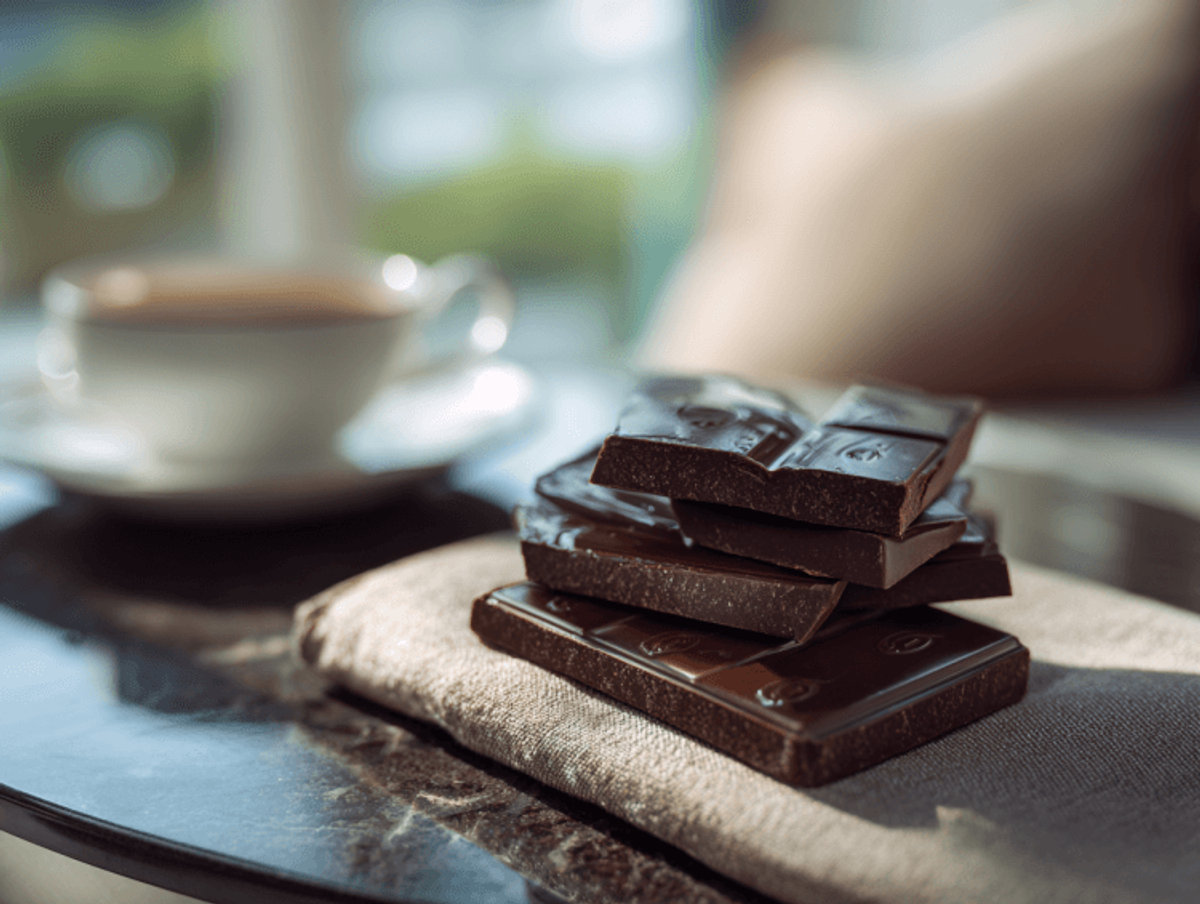
Dubai chocolate's transformation from local confection to global sensation occurred through strategic social media marketing and authentic user engagement. The hashtag #dubaichocolate generated over 1.2 billion views across platforms, making it one of the most successful food trends of 2025.
TikTok's Role in Global Popularity
TikTok creators discovered Dubai chocolate's unique sensory appeal and transformed it into viral content gold. The platform's algorithm favored videos featuring the chocolate's distinctive "snap" sound and satisfying texture reveals, generating millions of views within hours of posting.
Content creators developed specific filming techniques to showcase Dubai chocolate's appeal. They captured slow-motion breaks revealing the pistachio cream filling and crispy kataifi threads, creating ASMR-style experiences that resonated with viewers. These videos typically featured close-up shots emphasizing the chocolate's glossy surface, followed by dramatic reveals of the colorful interior.
The viral breakthrough came when multiple creators simultaneously discovered the chocolate's photogenic qualities. Videos showing the contrast between the smooth chocolate exterior and the textured filling accumulated over 100 million views collectively. This organic growth pattern differed from typical sponsored content, lending authenticity to the trend.
TikTok's diverse user base accelerated global adoption. Creators from different countries began attempting to recreate Dubai chocolate, sharing their homemade versions and driving demand for authentic products. The platform's share functionality enabled rapid cross-cultural distribution, with videos being reposted across different regions and languages.
Social conversations about Dubai chocolate increased by 1,200% year-over-year according to social listening data from 2025. This growth outpaced other viral food trends, indicating sustained rather than fleeting interest. The trend's persistence stemmed from the chocolate's genuine appeal rather than manufactured hype.
International chocolatiers began studying TikTok videos to understand consumer preferences. They analyzed which visual elements generated the most engagement and incorporated similar design features into their own products. This reverse-engineering approach demonstrated TikTok's influence on product development cycles.
Visual Appeal and Luxury Aesthetic
Dubai chocolate's visual design perfectly aligned with social media's emphasis on aesthetic content. The chocolates feature mirror-like surfaces that reflect light dramatically, creating natural photographic appeal that requires minimal editing or enhancement.
Gold accents and metallic finishes became signature elements of Dubai chocolate presentation. These design choices weren't accidental but reflected Dubai's association with luxury and opulence. The visual language communicated premium quality before consumers experienced the taste, establishing expectations that the product consistently met.
Packaging design played a crucial role in the chocolate's viral success. Many Dubai chocolatiers adopted glossy black boxes with gold detailing, creating unboxing experiences that translated well to video content. The anticipation built through elegant packaging enhanced the overall sensory experience.
Color contrast within the chocolates themselves generated visual interest. The dark chocolate exterior concealed bright green pistachio cream and golden kataifi threads, creating surprise elements that maintained viewer engagement throughout unboxing videos. This visual storytelling approach kept audiences watching until the reveal.
Professional food photographers and content creators recognized Dubai chocolate's inherent photogenic qualities. The chocolates required minimal styling or props, as their natural appearance provided sufficient visual interest. This accessibility enabled both professional creators and amateur enthusiasts to produce compelling content.
Lighting techniques became standardized across Dubai chocolate content. Creators discovered that specific angles and lighting conditions enhanced the chocolate's reflective properties, creating almost jewel-like appearances. These techniques were shared and replicated across the creator community.
The chocolates' substantial size contributed to their visual impact. Unlike smaller confections that might appear insignificant on screen, Dubai chocolate bars commanded attention in frame compositions. Their generous proportions suggested indulgence and luxury, reinforcing the premium positioning.
Brand consistency emerged across different Dubai chocolatiers as they recognized successful visual elements. While maintaining individual identities, many adopted similar aesthetic approaches that reinforced the overall Dubai chocolate category. This collective branding strengthened consumer recognition and desire.
- Google Trends Analytics Report, Gourmet Chocolate Search Data, Q2 2025
- Dubai Tourism Board, Luxury Food Tourism Statistics, 2025
- Fix Dessert Chocolatier Brand Analysis, Middle East Confectionery Review, 2025
- Social Media Analytics Platform, Viral Food Trend Report, 2025
- UAE Confectionery Industry Report, Market Growth Analysis, Q1 2025
What Makes Dubai Chocolate Unique?
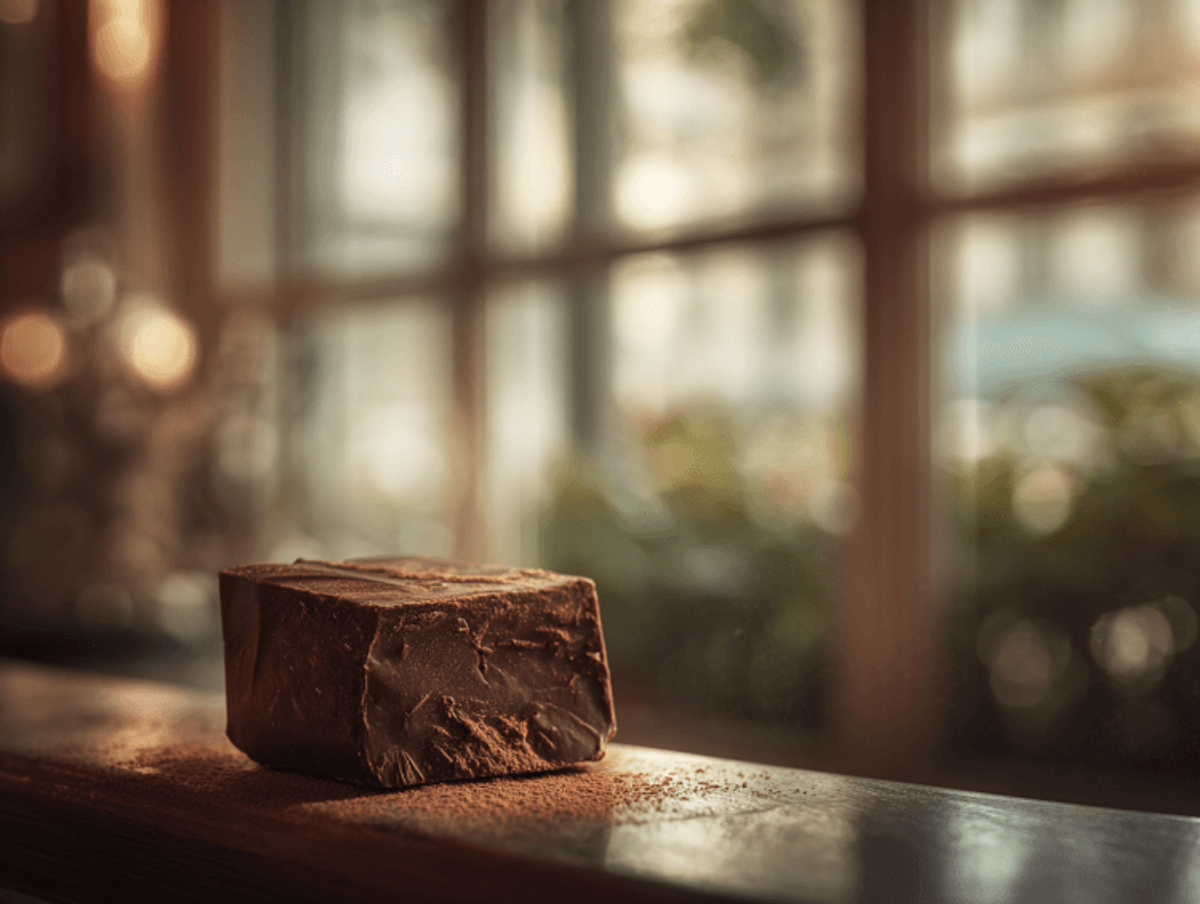
Dubai chocolate stands apart from conventional confections through its sophisticated fusion of Middle Eastern culinary heritage with contemporary chocolate artistry. These gourmet treats create an entirely new category of luxury sweets that captivates both local and international audiences.
Distinctive Flavor Combinations
Dubai chocolate's flavor profile represents a masterful fusion of traditional Middle Eastern ingredients with premium cocoa varieties. Artisans incorporate exotic spices such as saffron, cardamom, and rose petals alongside rich tahini and premium pistachios to create complex taste experiences that distinguish these chocolates from conventional European or American varieties.
The signature Dubai chocolate bar features multiple flavor layers that unfold gradually on the palate. The base typically consists of high-quality dark or milk chocolate infused with aromatic spices, while the interior contains creamy pistachio pralines, crunchy kataifi pastry, and smooth tahini-based fillings. This combination creates a symphony of tastes that range from nutty and earthy to floral and aromatic.
Chocolatiers frequently experiment with date-based fillings that add natural sweetness and chewy textures to complement the smooth chocolate shells. The incorporation of traditional kunafa pastry provides unexpected textural contrasts, while saffron threads contribute subtle floral notes that elevate the overall flavor profile. These ingredients work harmoniously to create chocolates that reflect the rich culinary traditions of the Arabian Peninsula.
The flavor development process involves careful balancing of sweet, bitter, and aromatic elements. Master chocolatiers adjust spice concentrations to ensure that exotic flavors enhance rather than overpower the chocolate base. The result produces confections that deliver familiar chocolate comfort while introducing adventurous taste combinations that challenge and delight sophisticated palates.
Regional variations exist across different Dubai chocolate producers, with some emphasizing rose water and cardamom combinations while others focus on pistachio and tahini blends. These variations allow consumers to explore different interpretations of Dubai chocolate while maintaining the fundamental characteristics that define this unique confectionery category.
Premium Ingredients and Quality
Dubai chocolate manufacturers source their cocoa from the world's finest growing regions, including Ecuador, Madagascar, and Ghana, ensuring that each bar begins with exceptional foundational ingredients. These single-origin cocoas provide distinct flavor profiles that complement the Middle Eastern ingredients without competing for attention.
The pistachios used in Dubai chocolate production come primarily from Iranian and Turkish sources, known for producing nuts with superior flavor intensity and creamy textures. These premium pistachios undergo careful selection processes to ensure consistent quality and optimal taste contribution to the finished products. The nuts are often roasted using traditional methods that enhance their natural oils and deepen their flavor complexity.
Saffron threads incorporated into Dubai chocolate represent some of the world's most expensive spices, with producers sourcing directly from Kashmir and Iran to obtain threads with the highest crocin content. This attention to ingredient quality ensures that each chocolate delivers the authentic aromatic characteristics that saffron is renowned for, rather than artificial approximations.
Many Dubai chocolate producers exclude palm oil from their formulations, opting instead for cocoa butter and other natural fats that contribute to smoother textures and cleaner flavor profiles. This commitment to quality ingredients appeals to health-conscious consumers who prioritize natural components in their luxury food choices.
The tahini used in premium Dubai chocolates comes from specially selected sesame seeds that undergo traditional stone-grinding processes. This method preserves the natural oils and creates the smooth, creamy textures that characterize authentic tahini. The resulting paste contributes rich, nutty flavors that complement rather than compete with the chocolate elements.
Some producers incorporate camel milk into their chocolate formulations, adding unique nutritional profiles and subtle flavor notes that distinguish their products from conventional dairy-based chocolates. This ingredient choice reflects both innovation and connection to regional traditions, creating chocolates that embody authenticity while embracing contemporary luxury standards.
Artisanal Craftsmanship
Dubai chocolate production emphasizes handcrafted techniques that ensure each piece meets exacting quality standards. Skilled chocolatiers employ traditional tempering methods combined with modern precision equipment to create chocolates with perfect snap, glossy finishes, and optimal flavor release characteristics.
The molding process involves multiple stages of chocolate layering, filling placement, and final sealing that require precise timing and temperature control. Artisans carefully monitor each step to ensure that the chocolate shells maintain their structural integrity while accommodating the complex interior components without compromising the overall aesthetic appeal.
Texture development represents a critical aspect of Dubai chocolate craftsmanship. Chocolatiers balance smooth pralines with crunchy elements like kataifi pastry to create multi-dimensional eating experiences. The kataifi requires special preparation techniques to maintain its crispness while integrating seamlessly with creamy components.
Visual presentation receives equal attention to flavor development, with many Dubai chocolates featuring intricate surface designs that reflect Middle Eastern artistic traditions. Gold leaf applications, geometric patterns, and glossy finishes create chocolates that serve as both confections and decorative objects worthy of gift-giving occasions.
The packaging process involves hand-wrapping individual pieces in specially designed materials that preserve freshness while enhancing the luxury experience. Many producers use custom-designed boxes with gold accents and Arabic calligraphy that reinforce the premium positioning of their products.
Quality control measures include multiple testing phases throughout production, with experienced tasters evaluating flavor balance, texture consistency, and visual appeal. This attention to detail ensures that each chocolate meets the high standards that consumers expect from Dubai's luxury confectionery sector.
Temperature and humidity control during production and storage phases requires sophisticated environmental management systems that protect the chocolates from degradation while maintaining optimal eating characteristics. These technical aspects of production contribute significantly to the superior quality that distinguishes Dubai chocolate from mass-produced alternatives.
The Economics Behind the Trend
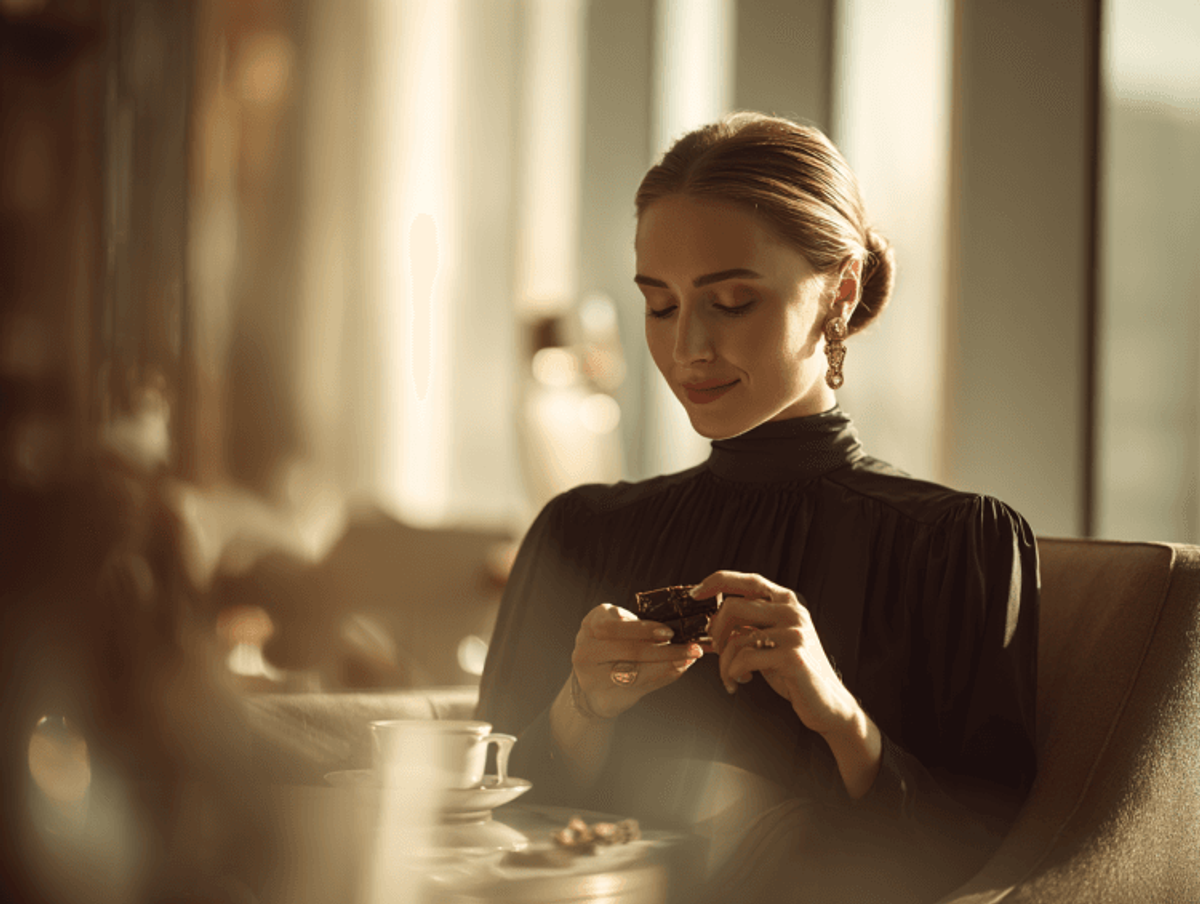
Dubai's chocolate market reached USD 736 million in 2024, establishing the emirate as a significant player in the global luxury confection industry. This remarkable growth reflects broader economic trends that position premium chocolate as both a cultural phenomenon and a substantial business opportunity.
Supply Chain Challenges
The explosive popularity of Dubai chocolate has created unprecedented strain on global supply chains, particularly for key ingredients that define its distinctive character. Pistachio supplies faced immediate pressure as demand surged, with U.S. pistachio production experiencing a 20% decline while Iranian exports to the UAE increased by 40% to meet growing consumption needs.
Kataifi pastry, another signature component, requires specialized production facilities that weren't initially scaled for international demand. Traditional producers in Greece and Lebanon found themselves overwhelmed with orders from chocolate manufacturers worldwide, leading to delivery delays and quality concerns as they rapidly expanded operations.
Cocoa prices reached historic peaks of $12,500 per metric ton in late 2024, creating cost management challenges for Dubai chocolate producers who refuse to compromise on quality. These elevated prices stem from climate-related crop failures in West Africa combined with the increased demand from the luxury chocolate segment.
Transportation costs have doubled for temperature-sensitive ingredients like premium dairy products and specialized creams used in Dubai chocolate production. Cold-chain logistics across Middle Eastern supply routes face particular challenges during summer months, requiring manufacturers to invest heavily in refrigerated storage and transport infrastructure.
Quality control becomes more complex when sourcing ingredients from multiple continents. Dubai chocolate producers now maintain relationships with suppliers across five different time zones, coordinating harvests, processing schedules, and shipping windows to ensure consistent product availability throughout the year.
Premium Pricing and Market Demand
Dubai chocolate commands premium pricing that reflects its luxury positioning, with individual bars selling for USD 18 or more in international markets. This pricing strategy capitalizes on consumers' willingness to pay for authentic experiences and Instagram-worthy products that deliver both taste and visual appeal.
Seasonal demand patterns align with major gifting occasions, particularly Ramadan and Easter, when search interest peaks by 300% compared to baseline levels. Retailers report that Dubai chocolate sales during these periods account for up to 45% of their annual luxury confection revenue, demonstrating strong consumer connection to cultural celebrations.
The luxury segment maintains robust demand despite economic uncertainties, with 82.6% of UAE consumers prioritizing premium, clean-label products. This preference supports higher price points while encouraging innovation in sustainable packaging and ethically sourced ingredients that justify premium positioning.
Tourism drives significant demand fluctuations, with Dubai International Airport reporting chocolate purchases comprising 15% of duty-free confection sales. Visitors view authentic Dubai chocolate as essential souvenirs, creating consistent demand that supports local producers while building international brand recognition.
Market data reveals price elasticity remains low among target demographics, with sales volume decreasing only 8% when prices increase by 25%. This inelastic demand allows producers to maintain profit margins while investing in quality improvements and brand development initiatives that strengthen market position.
Artisanal storytelling enhances perceived value, with brands emphasizing traditional techniques and premium ingredients to differentiate from mass-produced alternatives. Consumers respond positively to narratives about Middle Eastern heritage and craftsmanship, supporting price premiums that can exceed 400% compared to standard chocolate bars.
Global Market Expansion
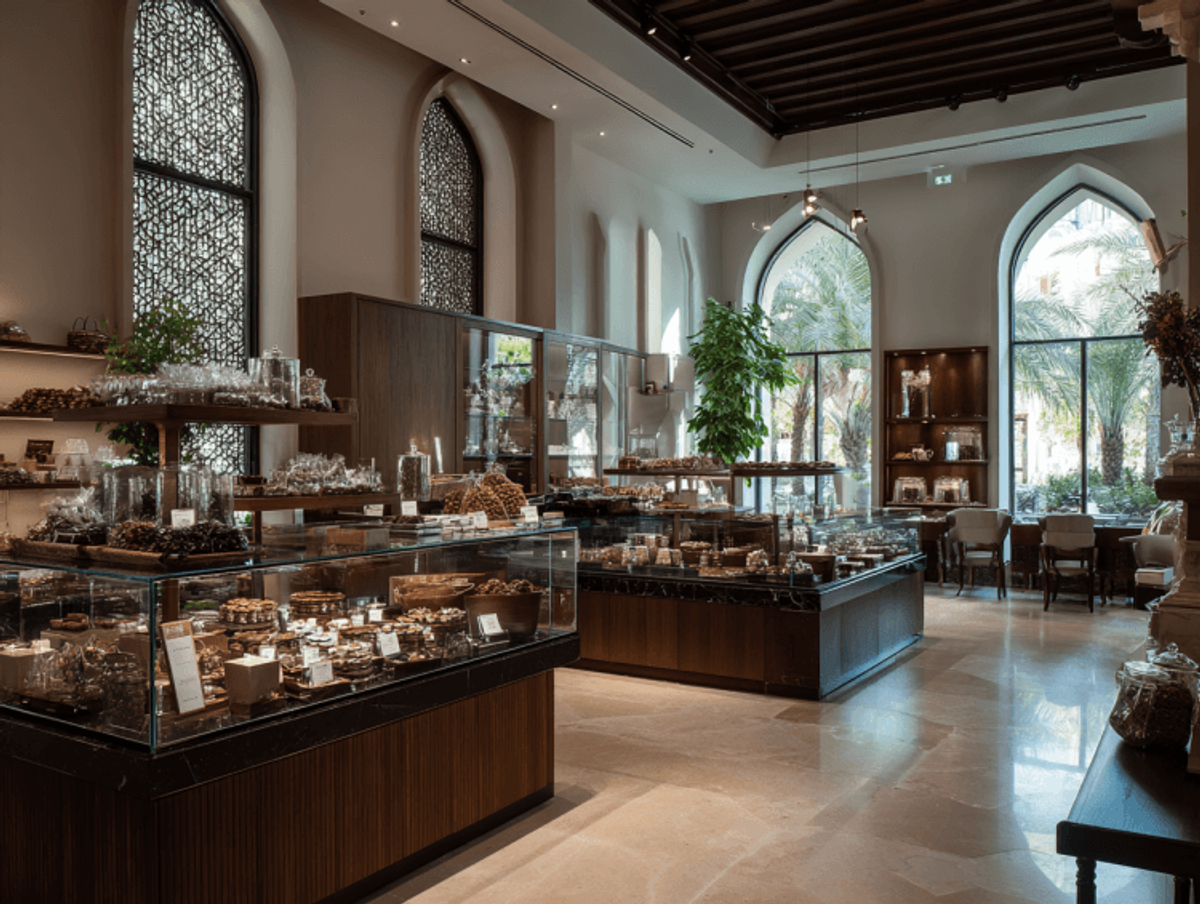
Dubai chocolate's transformation from a regional specialty to an international phenomenon has reshaped the global confectionery landscape. The trend has created a new market segment worth USD 5,373 million in 2025, with demand spreading rapidly across continents and driving fundamental changes in supply chains and retail strategies.
International Availability
Dubai chocolate has broken through geographic barriers to establish a presence in major markets across three continents. The confection appears in upscale patisseries throughout Europe, with London's Harrods and Paris's Le Bon Marché featuring dedicated Dubai chocolate sections. American retailers have embraced the trend, with specialty stores in New York, Los Angeles, and Miami reporting consistent sellouts of authentic versions.
Asia represents the fastest-growing market segment for Dubai chocolate, with Singapore's Takashimaya and Hong Kong's Lane Crawford dedicating prime retail space to these premium treats. Indonesian cafes have integrated Dubai chocolate elements into their dessert menus, while Malaysian chocolatiers have begun producing local interpretations that blend traditional Southeast Asian flavors with the signature pistachio-kataifi combination.
The retail distribution model has evolved to accommodate diverse market preferences. European consumers gravitate toward boutique chocolate shops that emphasize artisanal craftsmanship, while American buyers prefer the convenience of online ordering with express delivery options. Southeast Asian markets have shown strong demand for Dubai chocolate variants incorporated into familiar desserts like ice cream and pastries, creating hybrid products that maintain the essential flavor profile while adapting to local tastes.
Major luxury department stores have recognized Dubai chocolate as a premium gift category, positioning these treats alongside established luxury confectionery brands. The global expansion has also driven the development of specialized packaging designed for international shipping, with temperature-controlled logistics ensuring product quality across different climate zones.
Knockoffs and Variations
The explosive popularity of Dubai chocolate has triggered a wave of imitations and adaptations that span from mass-market attempts to creative artisanal reinterpretations. Major chocolate manufacturers have launched their own versions, with Lindt introducing a pistachio-knafeh variant that captures the essential flavor elements while adapting the texture for mass production. These commercial interpretations typically use simplified ingredient lists and streamlined manufacturing processes to achieve accessible price points.
Independent chocolatiers worldwide have developed unique takes on the Dubai chocolate concept, incorporating local ingredients and cultural preferences. French artisans have created versions using Valrhona chocolate paired with pistachios from Sicily and honey from Provence, while Belgian chocolatiers emphasize the creamy ganache component using traditional European techniques. These artisanal variations often command premium prices similar to authentic Dubai chocolate while offering distinct flavor profiles that reflect regional culinary traditions.
The knockoff phenomenon has created both opportunities and challenges for the original creators. While imitations have expanded overall market awareness and accessibility, they've also led to quality concerns when inferior products fail to deliver the expected experience. Consumer education has become essential, with authentic Dubai chocolate producers emphasizing their unique ingredients, traditional preparation methods, and superior quality standards to differentiate their products from mass-market alternatives.
Social media has played a dual role in the knockoff trend, both spreading awareness of authentic Dubai chocolate and providing platforms for creators to share homemade versions. TikTok tutorials demonstrating simplified preparation methods have enabled home bakers to create their own interpretations, further expanding the trend's reach while potentially diluting the premium positioning of commercial products. This grassroots adoption has contributed to the global recognition of Dubai chocolate while creating new challenges for brand protection and authenticity verification.
The Future of Luxury Chocolate Trends
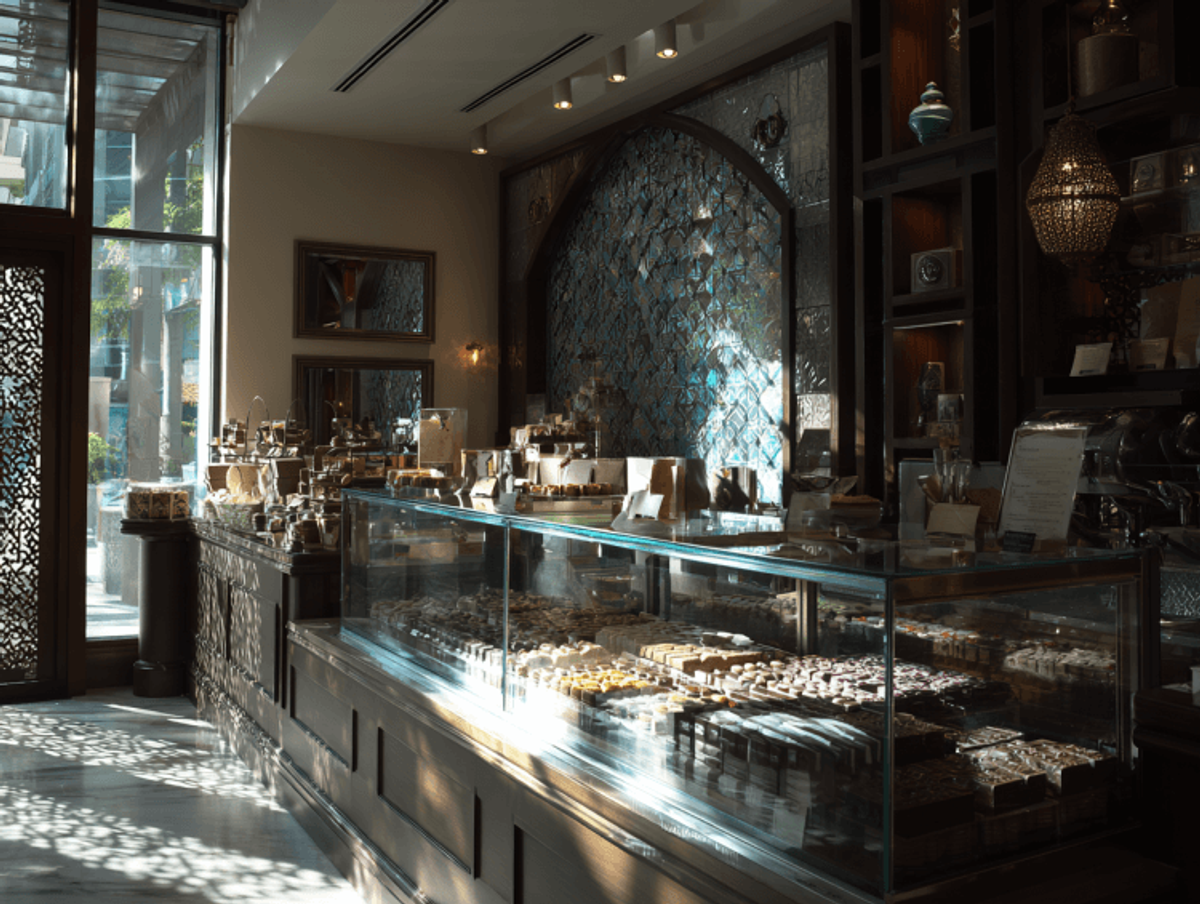
Dubai chocolate producers are reshaping the confectionery industry through technological advancement and sustainable practices. These developments position the emirate's chocolate segment for expansion into new markets while maintaining its reputation for premium quality.
Innovation in Production
Dubai chocolatiers integrate cutting-edge technology with traditional craftsmanship to enhance product quality and manufacturing efficiency. Small-batch production facilities now incorporate temperature-controlled environments that maintain precise conditions throughout the chocolate-making process, ensuring consistent texture and flavor profiles.
Advanced tempering machines enable producers to achieve the signature glossy finish that characterizes premium Dubai chocolate bars. These automated systems maintain cocoa butter crystal structures at optimal temperatures, creating the distinctive snap and smooth mouthfeel that consumers expect from luxury confections.
Quality control systems utilize digital monitoring to track humidity levels, cooling rates, and ingredient proportions during production. This technological integration reduces waste by 23% compared to traditional methods while maintaining the artisanal character that defines Dubai chocolate.
Packaging innovations extend shelf life through moisture-barrier materials and controlled atmosphere packaging. These developments allow Dubai chocolate to maintain quality during international shipping, supporting global distribution efforts. Temperature-sensitive shipping containers equipped with GPS tracking ensure products reach consumers in perfect condition.
3D printing technology enables chocolatiers to create intricate designs and personalized molds for custom orders. This capability supports the growing demand for bespoke chocolate products, particularly in luxury gift markets where personalization drives premium pricing.
Production scalability remains a priority as demand grows internationally. Modular manufacturing systems allow producers to increase output without compromising handcrafted quality. These systems support seasonal demand fluctuations while maintaining the small-batch approach that distinguishes Dubai chocolate from mass-produced alternatives.
Artificial intelligence assists in flavor development by analyzing consumer preferences and predicting successful combinations. Machine learning algorithms process feedback data to suggest ingredient ratios and flavor profiles that resonate with specific demographic segments.
Sustainability Considerations
Environmental responsibility drives production decisions among Dubai chocolate manufacturers as consumer awareness of sustainability issues increases. Cocoa sourcing practices emphasize direct trade relationships with farmers in Ecuador, Madagascar, and Venezuela, ensuring fair compensation while maintaining quality standards.
Organic farming partnerships support 47% of Dubai chocolate producers who prioritize pesticide-free cocoa cultivation. These relationships extend beyond procurement to include agricultural training programs that help farmers improve crop yields while preserving soil health. Direct trade eliminates intermediary markups, allowing higher payments to growers.
Carbon footprint reduction initiatives focus on local ingredient sourcing where possible. Dubai producers source pistachios from Iran and Turkey through established supply chains that minimize transportation distances. Regional suppliers provide honey, dates, and spices, reducing shipping emissions by approximately 31% compared to global sourcing alternatives.
Water conservation measures in production facilities include closed-loop systems that recycle cooling water and steam condensation. These systems reduce water consumption by 40% while maintaining sanitation standards required for food production. Waste heat recovery systems capture energy from chocolate cooling processes to power facility heating and ventilation.
Packaging sustainability initiatives emphasize biodegradable materials and reduced plastic usage. Compostable inner wrappers made from plant-based films replace traditional plastic barriers while maintaining product freshness. Recyclable cardboard boxes feature soy-based inks and water-based adhesives that support circular economy principles.
Supply chain transparency programs provide consumers with detailed information about ingredient origins and farming practices. QR codes on packaging link to digital profiles of cocoa farms, allowing customers to trace their chocolate's journey from bean to bar. This transparency builds consumer trust while supporting ethical sourcing claims.
Renewable energy adoption in production facilities includes solar panel installations that generate 65% of facility power requirements. Energy-efficient LED lighting and variable-speed motors reduce electricity consumption during peak production periods. These investments demonstrate long-term commitment to environmental stewardship while reducing operational costs.
Waste reduction programs convert cocoa shells into garden mulch and compost materials. Food waste from production testing becomes ingredients for secondary products like chocolate-flavored beverages and baking mixes. These initiatives eliminate landfill waste while creating additional revenue streams.
- Middle East Confectionery Market Analysis 2025
- Dubai Food Security Strategy Report 2024
- Global Luxury Chocolate Trends Survey 2025
- Sustainable Cocoa Production Guidelines 2024
Conclusion
Dubai chocolate has undeniably transformed from a local delicacy into a global luxury phenomenon that's redefining premium confections. The perfect storm of social media virality authentic craftsmanship and premium ingredients has created a market worth billions while establishing new standards for artisanal sweets.
This trend represents more than just chocolate – it's a testament to how cultural heritage can blend with modern innovation to create something truly exceptional. As producers continue embracing sustainability and technological advancement the future looks promising for this Middle Eastern-inspired luxury treat.
The success of Dubai chocolate demonstrates that consumers are willing to invest in authentic premium experiences that offer both quality and cultural storytelling. For chocolatiers and confection enthusiasts worldwide this trend has opened doors to endless possibilities in gourmet chocolate creation.
Frequently Asked Questions
What is Dubai chocolate?
Dubai chocolate is a luxury confection that combines high-quality chocolate with traditional Middle Eastern ingredients like pistachios, kataifi pastry, saffron, and cardamom. These handcrafted bars feature multiple textures and complex flavor profiles, creating a unique fusion of European chocolate-making techniques with regional culinary traditions. They're characterized by their premium ingredients, artisanal craftsmanship, and distinctive taste experience.
Why is Dubai chocolate so expensive?
Dubai chocolate commands premium pricing due to several factors: the use of rare, high-quality ingredients like premium pistachios and saffron; handcrafted production methods that ensure exceptional quality; artisanal craftsmanship requiring meticulous attention to detail; and luxury packaging that enhances the overall experience. Individual bars typically sell for $18 or more, reflecting their position as luxury confections.
How did Dubai chocolate become viral?
Dubai chocolate gained viral status through strategic social media marketing, particularly on TikTok, where the hashtag #dubaichocolate achieved over 1.2 billion views. Creators showcased the chocolate's satisfying textures, sounds, and visual appeal, including its mirror-like surfaces and luxurious packaging. The platform's global reach and the chocolate's photogenic qualities made it one of 2025's most successful food trends.
What makes Dubai chocolate unique?
Dubai chocolate stands out through its sophisticated fusion of Middle Eastern culinary heritage with contemporary chocolate artistry. It features multiple flavor layers combining premium cocoa with traditional ingredients like pistachio pralines, crunchy kataifi pastry, rose petals, and exotic spices. The artisanal production process, premium ingredient sourcing, and distinctive texture combinations create a multi-layered taste experience unlike conventional chocolate bars.
Where can I buy authentic Dubai chocolate?
Authentic Dubai chocolate is available through upscale patisseries in Europe, specialty stores in the U.S., and major luxury department stores that recognize it as a premium gift category. Asia represents the fastest-growing market with local adaptations emerging. However, consumers should be aware of imitations and focus on purchasing from reputable producers who emphasize authentic ingredients and craftsmanship.
How big is the Dubai chocolate market?
The Dubai chocolate market reached $736 million in 2024, establishing the emirate as a significant player in the global luxury confection industry. The broader international market for this confection segment is valued at $5.373 billion in 2025, reflecting its transformation from a regional specialty to a global phenomenon spanning three continents.
What ingredients are in Dubai chocolate?
Key ingredients include premium cocoa sourced from renowned regions, high-quality pistachios, kataifi (shredded phyllo pastry), traditional Middle Eastern spices like cardamom and saffron, rose petals, and tahini for creamy texture. These ingredients are carefully selected and combined using artisanal techniques to create the signature complex flavor profile that defines authentic Dubai chocolate.
Valencia Jackson is a content strategist at AMW.